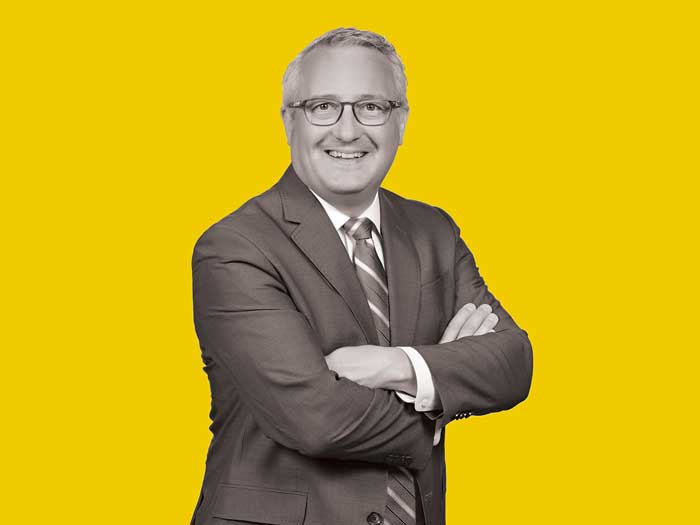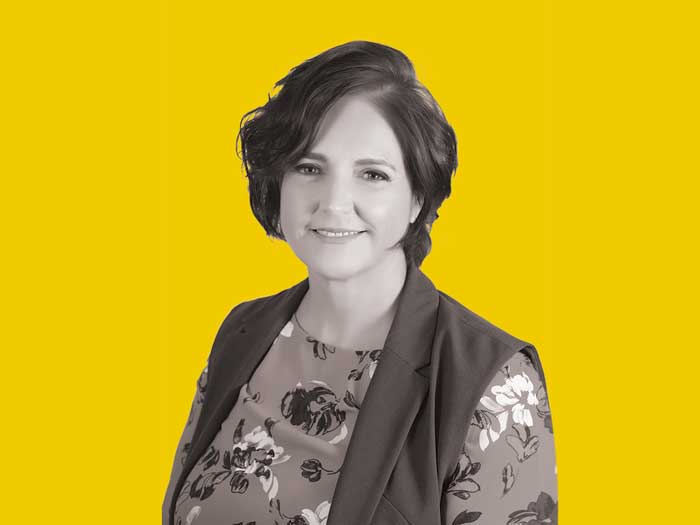
How Indigenous communities are regaining economic independence
 “The economy of Canada in the 400 years since first contact with Europeans was developed on the back of Indigenous people,” says Keith Martell, CPA, CAFM and president, CEO of the First Nations Bank of Canada and member of the Waterhen Lake First Nation (Photograph by Jedidah Merkosak)
“The economy of Canada in the 400 years since first contact with Europeans was developed on the back of Indigenous people,” says Keith Martell, CPA, CAFM and president, CEO of the First Nations Bank of Canada and member of the Waterhen Lake First Nation (Photograph by Jedidah Merkosak)
When Keith Martell, CPA, CAFM and president and CEO of the First Nations Bank of Canada, used to tell acquaintances what he did for a living, he’d receive a fairly uniform response. “When I was younger, I would always get, ‘Well, you’re in finance and Indians aren’t very good at finance, so it must come from your mother’s side,’ ” Martell recounts.
On his father’s side, Martell is a member of the Waterhen Lake First Nation, a fact that made this reaction all the more surprising. “I was always sort of cringing at that, because my father’s family were actually always in business. They used to be fur traders; they ran outposts. My dad was the business guy,” he says. “Most of my mother’s family were teachers. It wasn’t from the non-Indigenous side that my financial acumen came.”
As Martell explains, much of what we know as the Canadian economy today was founded by Indigenous business. “The economy of Canada in the 400 years since first contact with Europeans was developed on the back of Indigenous people—the fur trade, the support of settlers and explorers—that was all Indigenous business,” he says. “At the time they maybe didn’t conceive of themselves as business people, but they made a living guiding, supplying and outfitting people. I don’t think that’s something that was well appreciated before now.”
As the decades passed, many First Nations, Métis and Inuit people were systematically excluded from the economic sector, and financial fluency began to atrophy from lack of use. “The biggest challenge is that you can teach people all they want, but unless they have the opportunity to exercise financial literacy, it’s not going to become a way of life,” says Martell. As a result, many Indigenous individuals and communities had to outsource for financial advice, perpetuating the myth that Indigenous people aren’t financially capable until it became, in some instances, an internalized belief.
In recent years, however, Indigenous communities have been gaining economic momentum. “First Nations have growing economies; there’s mining operations next to Inuit communities in the North; there’s forestry operations in First Nations communities across Canada,” Martell says. Not to mention those pushing forward with new ventures in renewable energy, fishing operations, oil and gas, service industries and more. With this sudden influx of capital comes an increased emphasis on financial fluency—and a new opportunity for Indigenous communities to regain financial autonomy.
Established in 1996, the First Nations Bank of Canada was founded in part as a response to the lack of Indigenous-focused banking institutions. “We put banks into communities that have never had a bank,” Martell explains. The original First Nations Bank of Canada was built in Saskatoon, and it currently serves as headquarters. When you don’t have a bank nearby, setting up a financial foundation—“saving for retirement, buying a home, keeping your credit rating good to have credit cards,” even just setting up a bank account, Martell explains—is significantly harder to accomplish. The First Nations Bank of Canada now has 18 locations—nine full-service branches, and nine Community Banking Centres in more remote communities such as Pond Inlet, Nunavut, and Fort McPherson in the Northwest Territories. “We’re still probably a thousand times smaller than the five big chartered banks in Canada, but we’re approaching a billion dollars in assets and there’s not much we can’t do. That’s been a 20-year growing pain.”
Martell was also a founding member of AFOA Canada, a not-for-profit association that focuses on the capacity development and financial wellness of its Indigenous members. The organization’s core designation is a certification program for Certified Aboriginal Financial Management professionals, or CAFMs. “The work [the program is] doing is absolutely essential,” says Martell.
 “You can teach people all you want, but unless they have the opportunity to exercise financial literacy, it’s not going to become a way of life,” says CPA Keith Martell, a member of the Waterhen Lake First Nation (Photograph courtesy of Keith Martell)
“You can teach people all you want, but unless they have the opportunity to exercise financial literacy, it’s not going to become a way of life,” says CPA Keith Martell, a member of the Waterhen Lake First Nation (Photograph courtesy of Keith Martell)
Getting more Indigenous leaders into the financial sector is a long-term goal for president and CEO of AFOA Canada Terry Goodtrack, FCPA. “Accounting is the language of business,” he says. “To some degree what has occurred has occurred because Indigenous communities were not allowed to participate in the economy from the early 1900s; so you didn’t get those skill sets.” AFOA Canada ensures its Indigenous members not only have access to skill building but are inspired to enter into the field themselves. Aside from the CAFM program, AFOA Canada offers two other professional designations—Certified Aboriginal Professional Administrator (CAPA) and Certified Indigenous Leadership (CIL). It also runs a Dollars and Sense program for youth; a week-long intensive on investment management with Harvard Business School; and workshops that deal with lump-sum payments, planning for retirement and the like.
Still, despite the widening network and increased access, decades of snubs from the mainstream world of finance have taken a toll on many of AFOA Canada’s members. That’s why Goodtrack plans to roll out a new campaign guided by a key question-and-answer: “What is the government telling you when they provide you with limited authority, require lots of follow-up reports, and make all the decisions for you? That you can’t do it yourself,” he says. That’s why, as he sees it, in addition to building skills, it’s essential to build confidence. “So we’re going to come out with a campaign that essentially says, ‘We’re ready. We’re ready to take on this challenge of moving our community from passive poverty to the management of prosperity and wealth.’ ”
Doing so is no small task, especially because the hurdles are deep-rooted. Goodtrack recalls an example from his own student days at the University of Regina, in the 1980s: “In the accounting program we had to take taxation. I obviously understood money, but what if you don’t understand why taxation even happens?”
One program AFOA Canada recently joined, in collaboration with the CRA and with help from CPA Ontario volunteers, is the Community Volunteer Income Tax Program (CVITP), which sets up tax clinics in Indigenous communities. Goodtrack hopes these tax clinics will eventually grow into a self-sustaining network. “There are barriers that are overt, and there are barriers that are subtle; there are barriers that are cultural and there are barriers that are systemic. But you can’t just paint everybody [with the same brush],” says Goodtrack. “It’s finding out what barrier it is for a particular group.”
FCPA Helen Bobiwash agrees. “In order for people to understand financial literacy, it has to be relevant; whether it’s the period of life that they’re in, or their culture, or the environment they’re living in.” Like Goodtrack, Bobiwash has a personal connection to the work. “I’m very passionate about this because I feel like if it hadn’t been for the training I received, I could have a much different life right now.” Bobiwash, who is a member of the Thessalon First Nation, focuses her practice on services in Indigenous organizations, and she does her own outreach to individuals within surrounding Indigenous communities to help build financial capacity.
Bobiwash has also been hired under contract to conduct research for AFOA Canada. Over the course of one of her studies, she found that engagement with the material is much higher when those who deliver it are from the community, or at least established there for a while. “Ideally, AFOA Canada can train and support people [in the community] who will always be there.”
 “In order for people to understand financial literacy, it has to be relevant; whether it’s the period of life they’re in, or their culture, or the environment they’re living in,” says FCPA Helen Bobiwash, a member of the Thessalon First Nation (Photograph courtesy of Helen Bobiwash)
“In order for people to understand financial literacy, it has to be relevant; whether it’s the period of life they’re in, or their culture, or the environment they’re living in,” says FCPA Helen Bobiwash, a member of the Thessalon First Nation (Photograph courtesy of Helen Bobiwash)
Another factor that affects engagement, according to Bobiwash’s research, is the language used to frame financial fluency. “What does ‘financial literacy’ mean? And if I don’t know what that means, am I illiterate?” Bobiwash asks to illustrate the point. “AFOA Canada refers to it as ‘financial wellness’ because it really is about your wellness overall, it’s not just about finances.” She admits, however, that even this term is too broad for her liking.
Simon Brascoupé, a member of the Kitigan Zibi Anishinabeg First Nation and the former vice-president of education and training at AFOA Canada, agrees that the language can be a little misleading. “With low-income people, it isn’t a problem of financial literacy. They’re literate in their situation,” he says. “We kind of lay this ‘people don’t know what they’re doing’ label. That’s why we call it financial wellness—then it becomes a strength-based approach.”
Like Bobiwash, Brascoupé is sometimes hired under contract to conduct studies about financial wellness in Indigenous communities. The last big study he completed was for AFOA Canada in 2013. “What we learned from that study was it takes time to develop these programs,” says Brascoupé. He uses volunteer-run income tax programs as an example. Indigenous people are wary of the federal government, Brascoupé says, and many don’t like the idea of the government being involved in their business. “Maybe only 30 people filed their income taxes at these tax-free clinics initially,” he says. “But every year the number started increasing when people realized they could benefit, that their income could benefit.”
This applies to the volunteers’ training, too. As Bobiwash discovered, initiatives like tax clinics are more effective when they are run by members of the community. Doing so, however, means programs need to be in place that are focused solely on providing community volunteers with the information needed to deliver these clinics themselves. “To keep programs like these sustainable, you really need intensive, ongoing training.”
While most Indigenous communities face these challenges in varying degrees, some are already on their way to prosperity. “There are great things happening. We work with a lot of remarkable people and clients,” says Clayton Norris, a member of the Cold Lake First Nations. Norris, CPA, CAFM and MBA, is the vice-president of Indigenous services for MNP, which provides accounting, consulting and tax services to more than 250 First Nations, Inuit and Métis companies. He was so inspired by what he saw in the role that he partnered with AFOA Canada in 2017 to start the annual Indigenous Community Excellence Award. “There were a lot of smaller and medium-sized nations who don’t make the press but who are doing a lot of really good work,” says Norris of the idea behind the award. “There are some who have struggled for the last 10 or 20 years, and that’s what makes the news—the defeats. But when they do a complete 180, we wanted to celebrate that: the victories that wouldn’t necessarily hit the Financial Post.” The Kanaka Bar Indian Band from British Columbia was the recipient of the 2019 award for its outstanding work increasing community financial well-being. The 2020 awards were set to be held on October 29, but the ceremony was postponed to 2021 due to the pandemic.
Another initiative underway at MNP is a remote accounting and bookkeeping service called EASE. The program, launched in 2018, supports Indigenous governments, organizations or businesses in their financial management and growth. “The number of CAFMs and CPAs in Indigenous nations still remains a huge challenge for our industry,” says Norris. “So we created a cloud accounting model in order to support those already within a community to do the work.” And it’s not just about creating a dependency model, explains Norris. “We layered independent learning programs [ILPs] into the model and said, okay, we’re going to work with you to set up your chart of accounts and all your financial systems, and then we’re going to train your team to take over.” In many cases the nation members that have completed the ILPs have taken the next step and pursued CAFM designation or an accounting education.
While there are many success stories, there are also many challenges still to overcome. “With Indigenous communities, their level of complexity is growing overall but there are certain communities that are very high-performing, and there are certain communities that are still challenged. I find over time that gap is widening,” says Goodtrack. And with COVID-19 forcing most financial services online, it poses a threat that may increase the gap even more. “There’s a huge chance here that unless the Indigenous economy keeps pace, their economy will change coming out of it. Any time there’s an innovation, there’s a segment of society that gets left behind.”
That’s why Martell considers it important to invest in Indigenous financial wellness; he sees it as an investment in the wellness of the national economy overall. “This issue is not just an Indigenous people issue. Having Indigenous people who are successful, employed and financially capable is important for all of Canada. It’s such a large-growing sector of the population that we want them to be successful.”
BUILDING CONNECTIONS
Learn how CPA Canada is laying the groundwork for prosperity in Canada’s Indigenous communities, including the CPA Martin Mentorship Program for Indigenous High School Students in partnership with the Martin Family Initiative.